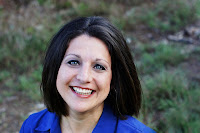“They sailed well and the old man soaked his hands in the salt water and tried to keep his head clear. There were high cumulus clouds and enough cirrus above them so that the old man knew the breeze would last all night. The old man looked at the fish constantly to make sure it was true.”
I paused in my reading – the hot Texas sun creating empathy for the Cuban fisherman. Five warm, sweaty faces looked up from their sketchbooks and waited expectantly – the first reading of a book always brings the greatest response.
“It was an hour before the first shark hit him.”
Ten words that had an electrifying effect on my young children for, by this point, they felt like they knew the protagonist. They had felt sympathy for the poor old man who was mocked for his run of bad fishing, suspense as the old man had fought the enormous marlin, excitement as finally he won the great battle, and now …. sharks?
When I first read Hemingway’s Old Man and the Sea their ages ranged from three to eleven, but despite the age range, every child knew the implications of the word “shark”. Even with the passing of the time, each of them clearly remembers the story.
Multiple ages? Multiple grades? Yes, it’s workable, in fact, it can be much better than that – it can produce a wonderful education in your home.
We had been studying World Geography and when we came to Cuba, I knew there was one great classic book that I had to share with them – although a few minor edits would be necessary. Reading aloud to your kids gives the mom the freedom to skip over questionable parts. Hemingway was one of my favorites in high school and I was curious if it would have the same appeal for my crew.
While we are not classic literature nuts, there are many well-written books, accessible to the humble masses, that can greatly enrich your children’s education.
We have found the best way to incorporate multiple ages is through reading books together. Why?
Great literature levels the playing field.
When you limit your child’s education to dry, boring textbooks followed by mind-numbing tests and worksheets, you keep them from developing a relationship with the material. So rather than becoming interested in the lives of fascinating people in history and developing a hunger to learn more, they are limited to memorizing monotonous facts that have no true meaning to them.
Textbooks are greatly prohibitive in a homeschool setting because each child is isolated to their own particular studies and the mother’s instruction and time is spread thin between each age, subject and grade.
But a great book, like Old Man and the Sea, can be read to a wide variety of ages – each child takes something different from it, but each child learns. There are many benefits: they learn to appreciate well-written books; they are being immersed, in this example, to Cuban culture and history; and they are seeing that education is not the act of sitting in a desk filling in the blanks.
Plus I get to learn alongside them – learning far more in the past several years of homeschooling than I did in all my years of being an above average student.
Well, above average except for that unfortunate semester of sophomore Geometry.
Using literature in this way encompasses many subjects: history, geography and language arts. We’ve used Kjelgaard’s wonderfully engaging dog adventures, Linda Sue Park’s enchanting Korean tales and Patricia St. John’s character building stories.
For our family, sitting around on the living room floor or outside in the treehouse with a great book is a comfortable, familiar way of learning. Each child listens in their own way – some with a sketchbook, some with a piece of clay to keep their hands occupied, some with nothing but their own mind for distraction.
My expectations vary for each child according to their level. With Old Man and the Sea, I would ask my older children to “tell me about what we read today” in true Charlotte Mason fashion.
At that point I am the one waiting expectantly to hear their own interpretation of the reading – and I know that, if they can process the plot and narrate back to me in their own words, they truly comprehend the material.
It’s a much better measure of comprehension than an exam where facts are easily memorized and even more easily forgotten.
An end of the week spelling bee or penmanship exercise, words tailored to individual levels, easily incorporates multiple ages. And then the ultimate home schooling test: striking up a conversation at supper – “Dad, did you know…” What a joy to see them develop a passion for learning!
Literature read together as a family has developed bonds and relationships, produced a love for learning and richly enhanced our children’s education – all while many ages are learning together. Even when the sharks eat the marlin.
 AUTHOR BIO: The Toliver family serves full-time with Wycliffe Associates and is currently working at the Linguistics Center in Dallas, Texas. Gwen writes about ministry and big family homeschooling, and all the hilarity that follows, at Tolivers to Texas. {ToliversToTexas.com} Gwen is also the author of Seed Sowers: Gospel-Planting Adventures{seedsowersthebook.com}– the perfect collection of modern day missionary adventure stories for families wanting to give their kids a heart for the Lord and the lost. The book is available through Grace & Truth Books. {graceandtruthbooks.com}
AUTHOR BIO: The Toliver family serves full-time with Wycliffe Associates and is currently working at the Linguistics Center in Dallas, Texas. Gwen writes about ministry and big family homeschooling, and all the hilarity that follows, at Tolivers to Texas. {ToliversToTexas.com} Gwen is also the author of Seed Sowers: Gospel-Planting Adventures{seedsowersthebook.com}– the perfect collection of modern day missionary adventure stories for families wanting to give their kids a heart for the Lord and the lost. The book is available through Grace & Truth Books. {graceandtruthbooks.com}








Leave a Reply